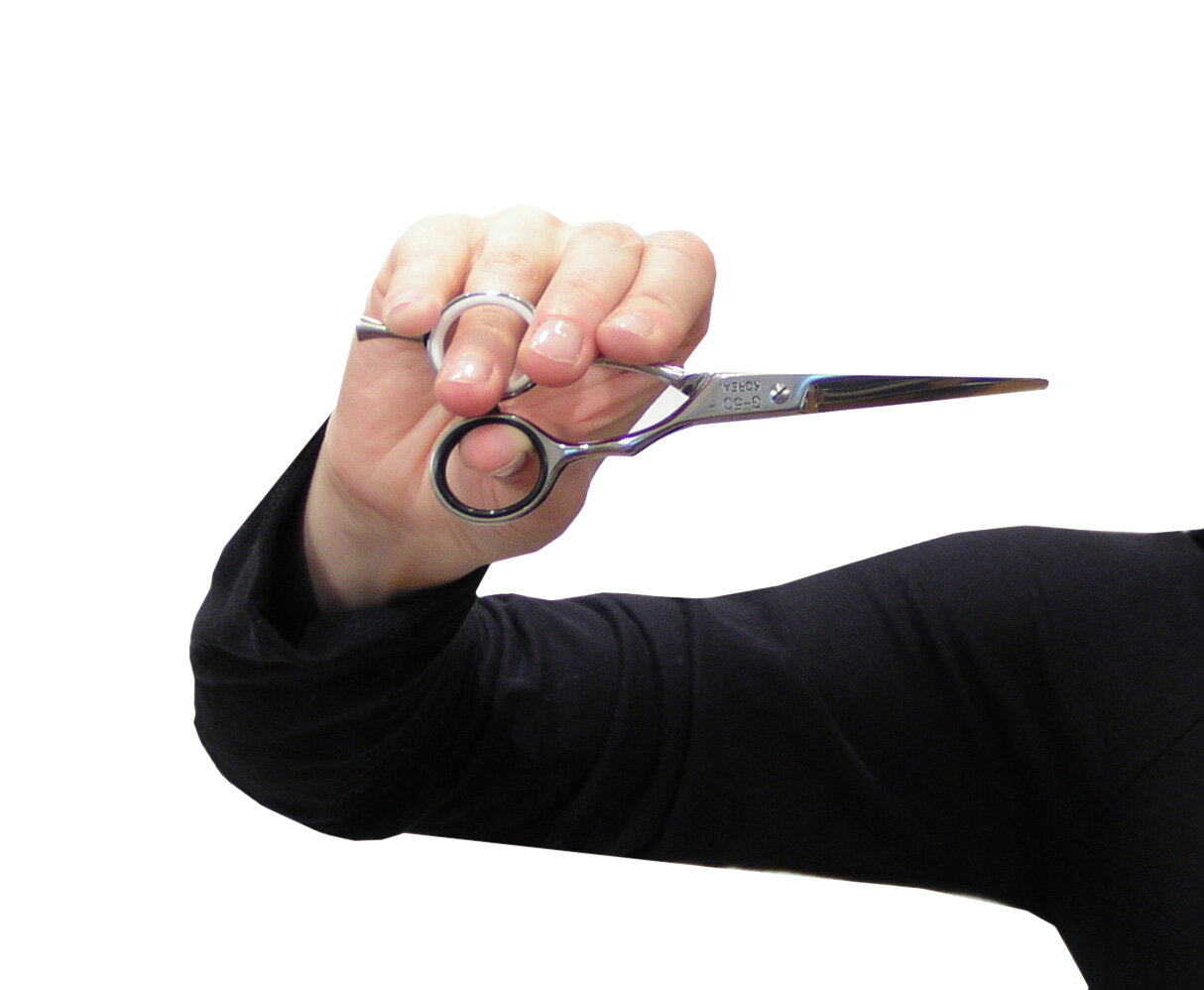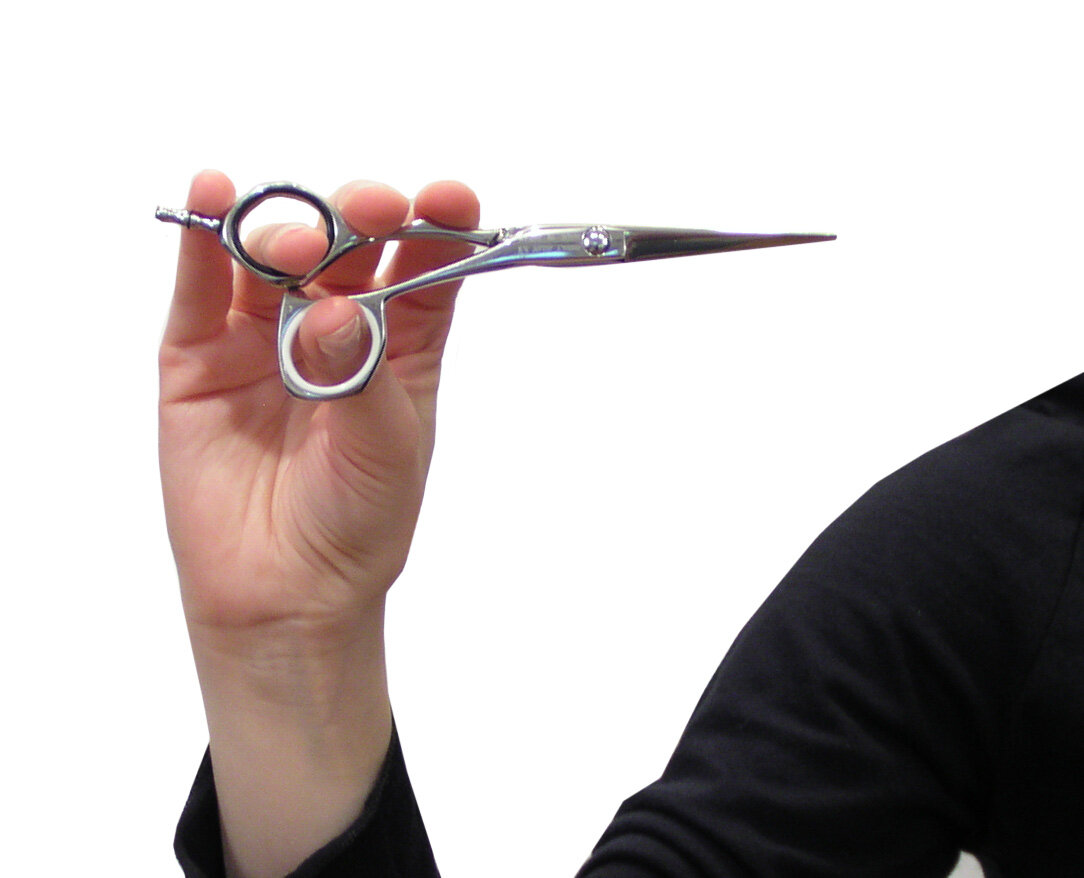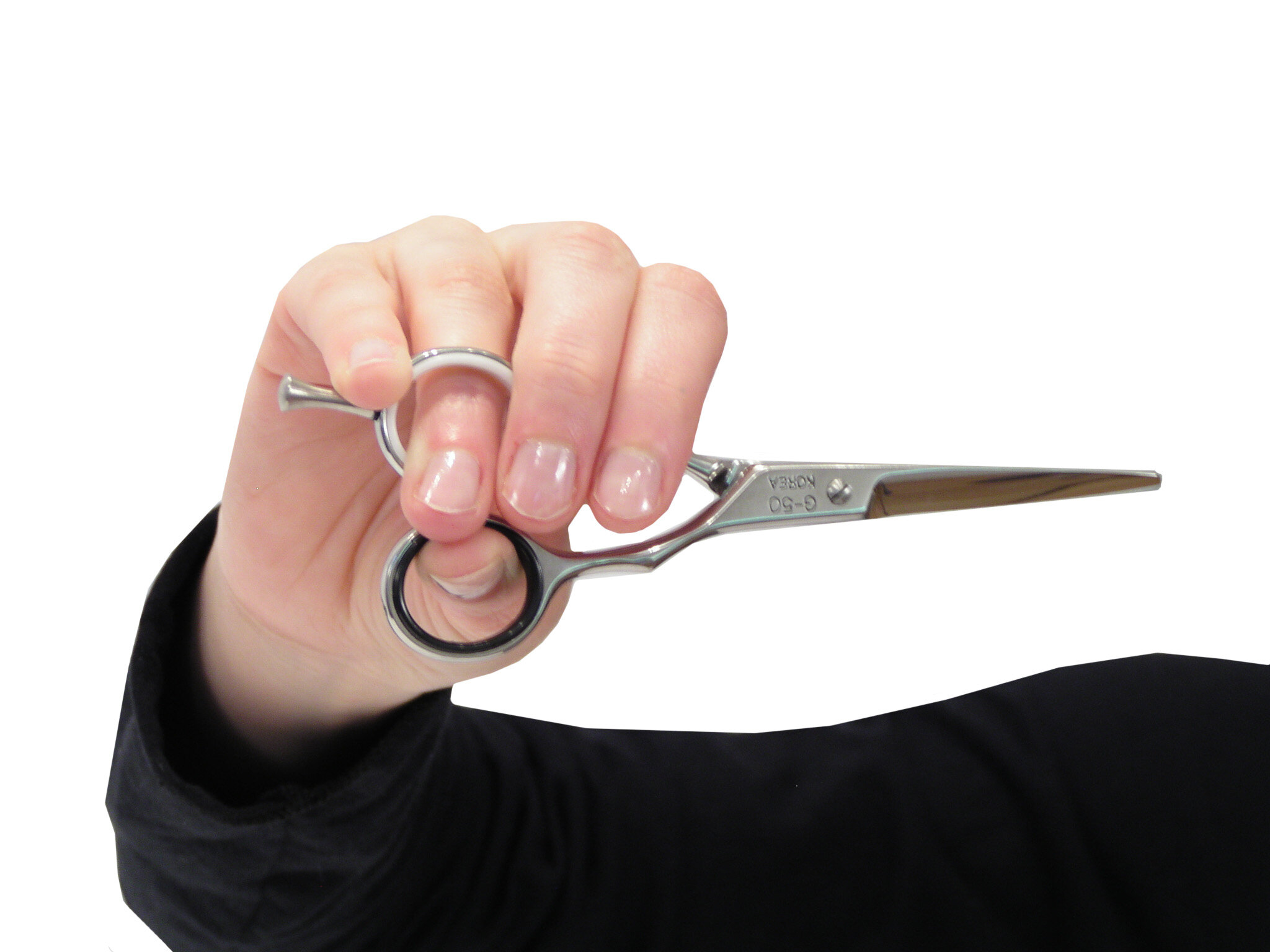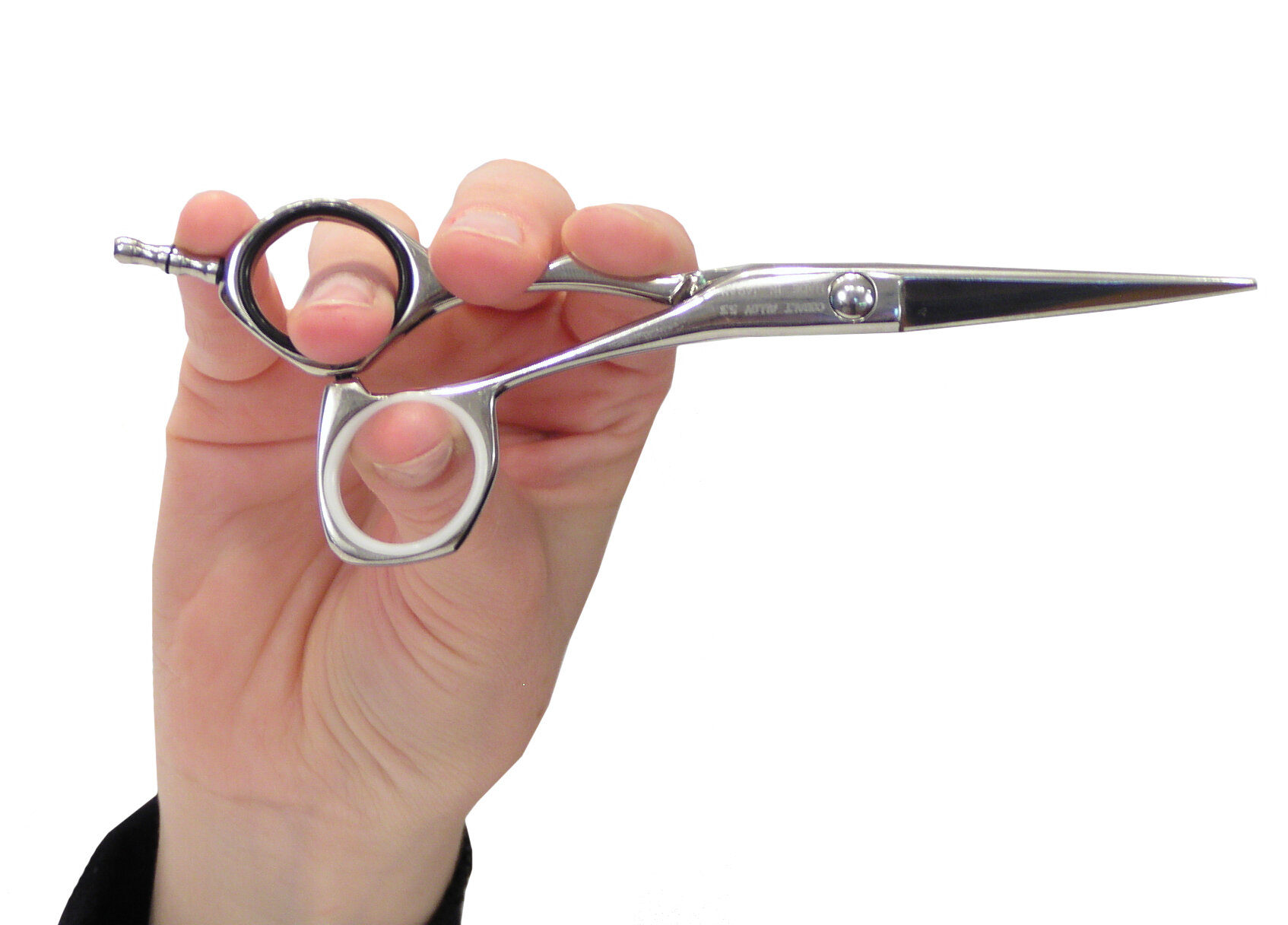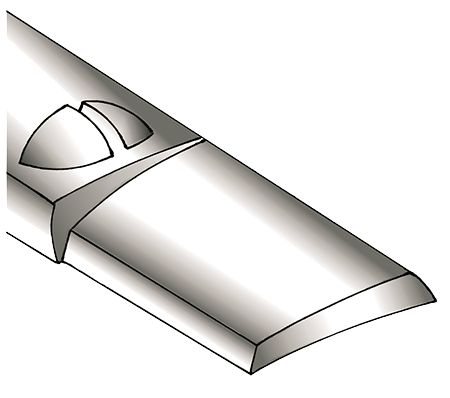Choosing the Right Shear
Carpal Tunnel Syndrome and Thoracic Outlet Syndrome affect hairdressers more than any other repetitive motion diseases.
Carpal Tunnel Syndrome: Constant flexing and over-extension of the thumb and fingers can cause irritation of the tendons in the wrist which can cause them to swell and put pressure on the nerve going to the hand, resulting in numbness, tingling and pain.
Thoracic Outlet Syndrome: Repeated lifting of the arm and shoulder can cause compression of the neurovascular bundle which provides blood circulation for the arm and hand. The symptoms are similar to carpal tunnel, including numbness in the arm and the feeling of the arm “going to sleep”.
To remain healthy we need to cut as much as possible with: Back straight, shoulders square, elbows down, cutting hand open and relaxed.
Handle Design
The three crane handle designs allow you to cut with your elbow down which promotes freer blood flow and nerve energy. It also minimizes the risk of thoracic outlet syndrome and bursitis in the shoulder.
The handle design is the most important element of the shear for promoting good cutting position. There are five common handle designs:
1) Opposing Grip-
The oldest handle design. Works best when cutting with the thumb and second finger.
2) Offset Handle-
Puts the thumb and the third finger in a more natural position. Requires cutting with the elbow raised.
3) Crane Handle-
Offset with handle tilted downward allows cutting with elbow lowered.
4) Crane Handle with Expanded Grip-
Similar to #3 Crane handle but allows the shear to closed and still leaves the cutting hand slightly open and relaxed.
5) Crane handle with Expanded Grip and Rotating Thumb-
Similar to #4 Crane Handle with Expanded Grip but allows more natural movement of the body.
Edge Design
There are only two edge designs:
1) Beveled Edge- The oldest design. Requires more effort to cut and does not slide cut as well. A Thick Visible edge.
2) Hamaguri or Convex Edge- Concentrates more power on a narrower edge. Requiring less effort and providing the best slide cutting.
Adjustment
A shear that can’t be adjusted (tightened or loosened) by the stylist gets dull faster. Every shear we sell can be adjusted by the stylist one of three ways:
Locking Adjuster
Turning the adjuster with the key tightens or loosens the shear.
Locking Internal Adjuster
Simply turning the dial tightens or loosens the shear.
Coin Adjustable Screw
Can be tightened or loosened with a coin.
Length
Most shears are available in lengths from 5 to 7 inches (designating the overall length of the shear), with the most popular lengths being 5.5 to 6 inches. Choose the longest shear you are comfortable with. Not sure which length? See “what length shear should I buy?” in our FAQ.
Thinning and Texturizing Shears
All stylists need thinning and texturizing shears to achieve special effects from the blending of lines in a man’s haircut (thinning or blending shears, 30 to 40 teeth) to more noticeable spiking and movement (more often called texturizing shears, 5 to 25 teeth). The more teeth, the more subtle the texture-the fewer teeth, the more noticeable the texture.


